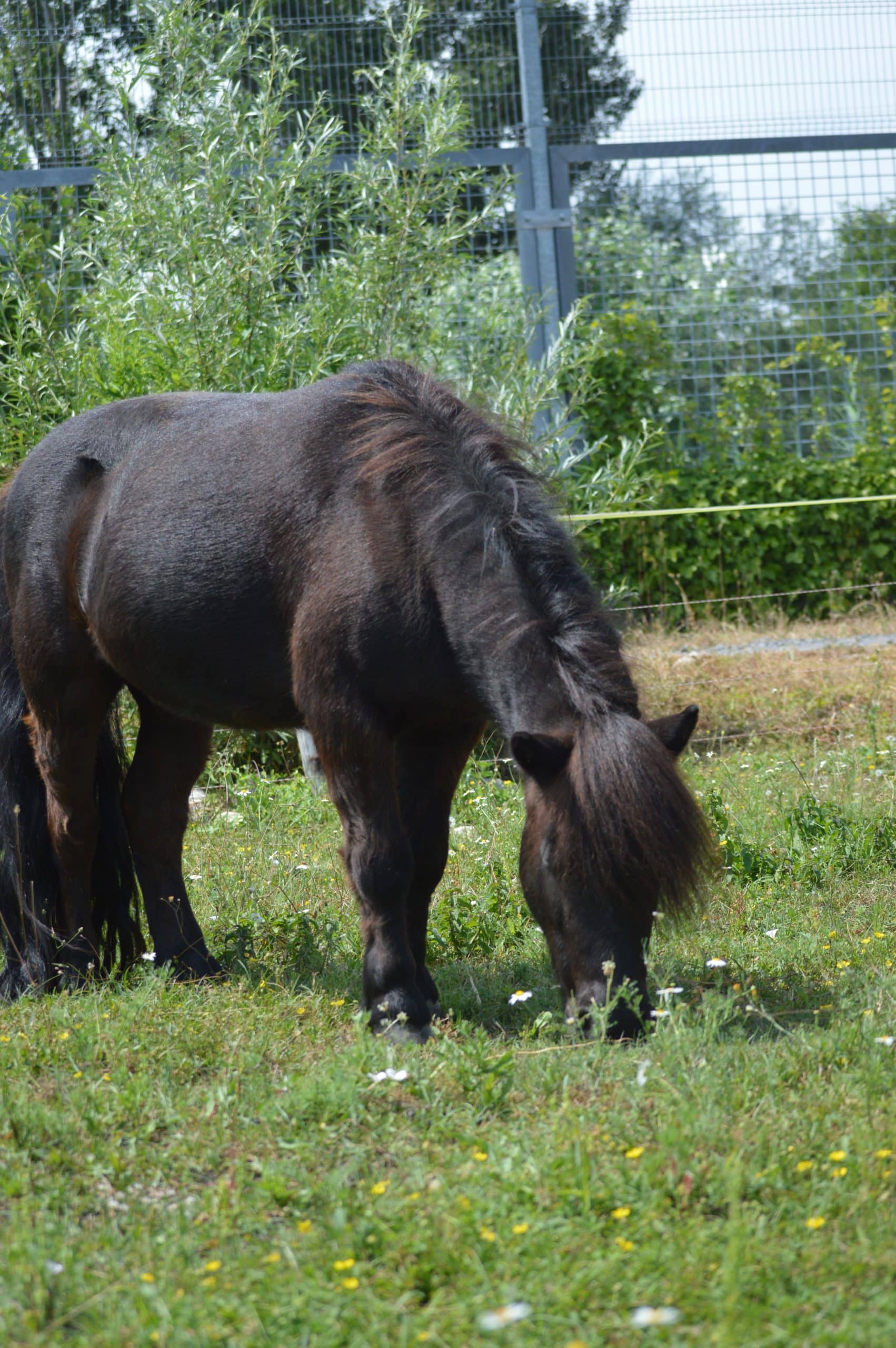The pony is characterised by a firm, robust body, a downwardly hanging belly and a short back. It has short and sturdy legs, on them small and strong hooves, which it can run without problems even on uneven terrain. It is characterised by an elegant small head and a short thick neck with a thick mane covering both head and neck. Coat colour is mostly black or brown. In winter, its coat is dense and water-resistant. Also, the tail is long and thick at that time.
In semi-wild breeding in Shetland, breeders select breeding stallions in the herd throughout the year. If the choice is left to the animals, the male seeks out females ready to mate in mid and late spring. This ensures that the young will be born next spring when the grass will be softer. The breed can be considered one of the purest, as there is no possibility of crossbreeding with other breeds of horses on the islands. A mare usually gives birth to one young, which she nurses until she becomes pregnant again.
The inhabitants of the island use the pony as a draft animal and for work in the fields. It is also a favourite in trotting races.
It is one of the most original horse breeds in Europe. At the same time, due to its size and strength, it is one of the toughest breeds.
A Shetland pony pulls a load that is twice as heavy as it is.
In its native Shetland, this pony is called a “sheltie”.
In the 19th century, these horses were also used in the mines. Because the specimens selected for the job had big and ugly heads, now that they have lost their usefulness, breeders are culling them from the breeding stock.
In winter, the pony digs grass and moss out from under the snow.
When the grass is particularly hard, ponies can graze for up to 22 hours a day.






